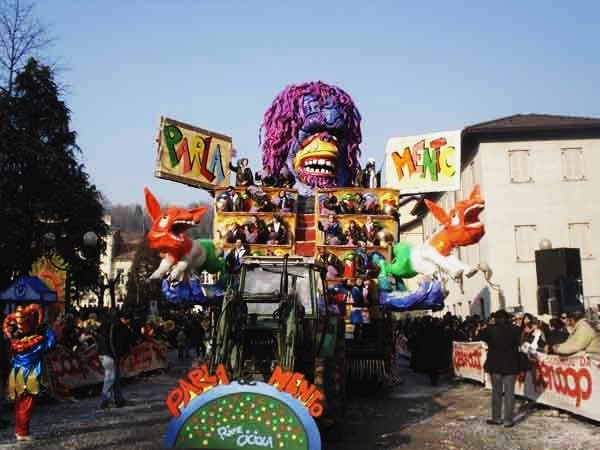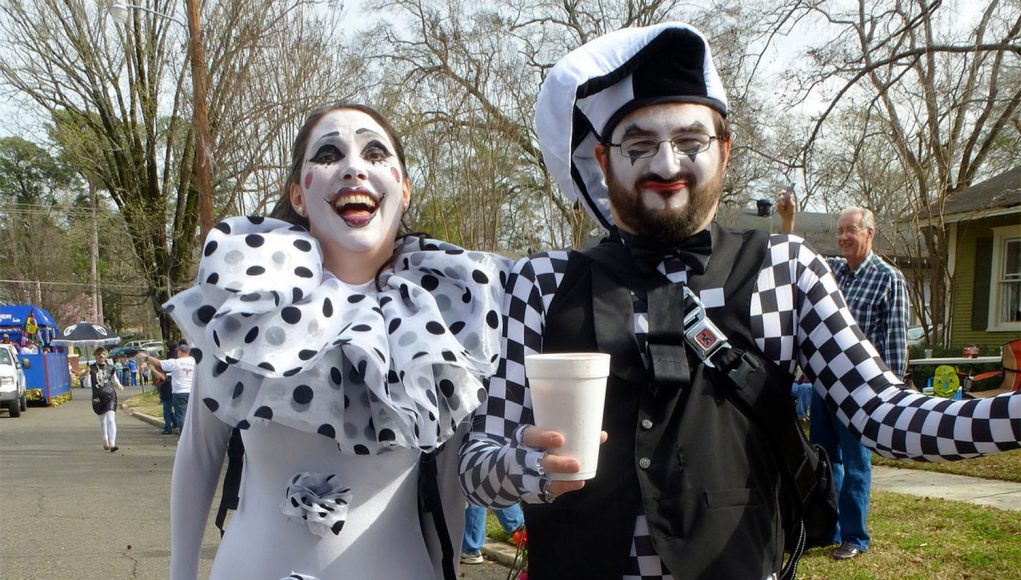Ash Wednesday in Louisiana is a quiet day in which the celebrants of Fat Tuesday, Mardi Gras, try to be penitent. Many may go to the Catholic church to be marked with a smudge of ashes and to hear the words, “From dust you came and to dust you shall return.” The church says it is the beginning of the season of Lent.
Yet celebrants in many locations across the Catholic world have found reason to extend their Carnival activities. For them, Ash Wednesday, in what must be a delicious transgression, is not the last day, but is one more day of Carnival.
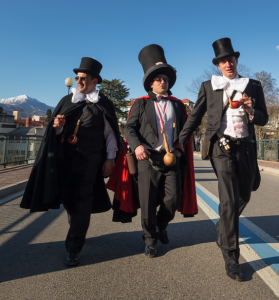
One of those locations is the Piedmont town of Borgosesia, Italy, found in the mountains between Milan and Turin. There the partiers dress formally on Ash Wednesday – top hats, black capes, big bow ties – and revel in tasting the wine at every cafe as they perambulate the historic location. The day is called Scurot Mercu (“Dark Wednesday”) and takes the form of a bibulous funeral for the traditional figures of Carnival. It ends with a bonfire and the burning of a puppet effigy.
Borgosesia is the home of Giovanni Prosino, oenologist, wine dealer, and resident of Shreveport.
The Prosino family, Borgosesian factory owners, steadfastly avoided Scurot Mercu, remembers Giovanni. He knew nothing of it until his uncle described it to him.
Yet, as a fellow growing up in the nation that is the birthplace of Lent and of Carnival, he knew the season by immersion. “It has always been part of my life. Many people don’t know how deeply rooted is the Italian feeling for the Carnival celebrations.”
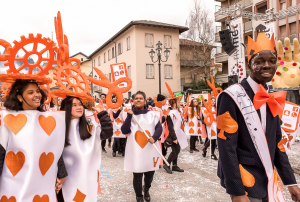 The Roman epigram “Semel in anno licet insanire,” meant that once a year you are allowed to go crazy, observes Prosino. “In the context of Catholic culture, the Roman and pagan tradition found a place to give people a breather from the constriction of the Christian orthodoxy. So Carnival, strategically placed before the Lent period, is a universal celebration of life during the rigor of the winter times.”
The Roman epigram “Semel in anno licet insanire,” meant that once a year you are allowed to go crazy, observes Prosino. “In the context of Catholic culture, the Roman and pagan tradition found a place to give people a breather from the constriction of the Christian orthodoxy. So Carnival, strategically placed before the Lent period, is a universal celebration of life during the rigor of the winter times.”
Venice is probably the best known center for Carnival, says Prosino. “Think of the Venetian author and adventurer Giovanni Casanova, an epitome of libertine freedom. Every Italian town, though, has its own version of the Carnival.”
In Borgosesia, “three weeks before the Fat weekend there is a constant series of events, from masked dancing to a full-fledged parade on Sundays, complete with giant trailers full of kids throwing candies to the audience. Every small neighborhood of the town has its own royal characters, people dressed and named for fictional sovereigns of the local Carnival, sometimes really coming from ancient tradition, sometimes the fruit of spontaneous invention. Each one hosts an event, from walking and drinking as they visit the sites of the place, to concerts, to dancing evenings.”

Prosino notes that, “With time, the surrounding hamlets became part of the event, and, in order to accommodate all the events, the parties continue for a good month. Counting the preparation for the events, the whole thing becomes a serious affaire that takes several months of preparation.”
The foods associated with the Piedmontese winter celebration include polenta, the staple of impoverished farmers, and game, such as hare or chamois. There is also pancetta, a type of bacon made of salt-cured pork belly. Pancetta is often consumed raw.
Perhaps more appealingly there are crepes called miacce. The hard, hot crepes – “the flavor is between a tortilla and naan bread” – are filled with cheese, ham or Nutella, the sweet spread created in Italy.
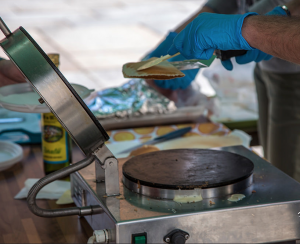 “So,” says Prosino, father of two and husband of Rebecca Nesbitt Prosino, “you can see how growing up you come to admire, respect and wait anxiously for the Carnival events.
“So,” says Prosino, father of two and husband of Rebecca Nesbitt Prosino, “you can see how growing up you come to admire, respect and wait anxiously for the Carnival events.
“As a kid you see the local King and Queen of the Carnival come to your school and talk to you about the tradition, then get to be a part of the parades, then graduate to the Mercu Scurot feast. It’s a rite of passage that becomes part of your identity.”
While Borgosesia’s celebration dates from the 1700’s, it is apparent that there are many parallels with the Louisiana Carnival.
The Prosinos are active in the Blanc et Noir Marching Society. Inasmuch as it is a march of masked characters and depends on horns and drums for its music there seem to be several parallels between the Borgosesian celebration and Blanc et Noir, itself patterned on the oldest traditions of New Orleans. And thus, upon the traditions of Italy.
